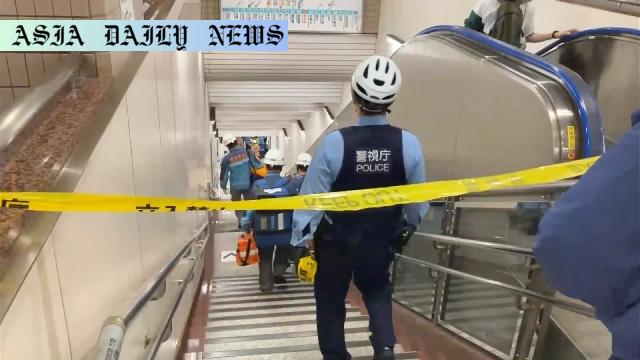Stabbing: A 43-year-old man attacks two strangers at a Tokyo subway station, leaving two injured. Investigators are searching for motives.
- A stabbing attack in Tokyo’s Todaimae Station injured two men.
- The incident occurred on the Namboku Subway Line at 7 p.m.
- A 43-year-old suspect, now in custody, remains uncooperative.
- Authorities state the victims and the attacker were strangers.
- Investigation continues to determine the motive for the crime.

A Shocking Attack on the Tokyo Metro
In a disturbing incident that unfolded on Wednesday evening, a man went on a stabbing spree on the platform of Todaimae Station, located on the bustling Tokyo Metro Namboku Line. The attack, which startled commuters, occurred just before 7 p.m., leaving two injured and raising serious concerns regarding public safety in Tokyo’s otherwise typically safe subway system. Surveillance footage shows the suspect, a 43-year-old man, targeting one of the victims—a man in his 20s—who was about to board a train. The suspect chased him with a knife and inflicted multiple injuries, including severe wounds to his head.
The Heroic Effort That Prevented Further Escalation
While the assailant continued his attack, another man, aged in his 30s, intervened heroically to stop the situation from escalating further. Unfortunately, in his courageous effort to restrain the attacker, he sustained significant injuries to his hand. Despite the panic among other commuters, local property staff and police swiftly responded to the scene. The suspect was apprehended at the station, putting an end to the violent spree. However, when questioned by law enforcement, the suspect appeared uncooperative, refusing to reveal his motives or reasons behind the attack.
An Ongoing Investigation and Broader Concerns
Tokyo Metropolitan Police have confirmed that the victims and the suspect were strangers, which points to a random act of violence. This raises urgent questions about the safety and security of public spaces amidst growing mental health concerns and societal pressures. Authorities are continuing to investigate the incident and analyze the suspect’s background for potential motives. Such erratic and violent behavior highlights a need for improved surveillance and preventive measures in public transport systems, especially in cities as densely populated as Tokyo.
A Call for Safety and Awareness in Busy Metro Systems
This incident serves as a stark reminder of the vulnerabilities in dense urban areas, especially in high-traffic locations like subway stations. While Japan is known globally for its low crime rate, isolated violent events like this expose gaps in ensuring complete safety. Policymakers, transportation bodies, and community leaders must now join forces to implement tightened security and foster better mental health initiatives to preemptively address the underlying causes of such crimes.



Commentary
The Incident and Its Impact on Public Safety
The stabbing at Tokyo’s Todaimae Station has left many people grappling with fear and concerns about public safety. Although Japan remains a country renowned for its remarkably low crime rates, events such as this are a stark reminder that even the safest areas are not entirely immune from acts of violence. This particular attack, given its random nature, has shaken the confidence of commuters, especially in a city as busy and bustling as Tokyo. The psychological aftereffects of such incidents can often linger, impacting individuals’ daily routines and sense of security.
The Heroism Displayed Amidst Chaos
What stands out amidst this tragedy is the courage shown by the second victim, a man in his 30s, who selflessly intervened to prevent the situation from escalating further. Acts of bravery like these highlight the innate humanity that emerges in moments of crisis. Unfortunately, this brave Samaritan sustained injuries during his attempt to stop the attacker. His actions demonstrate how critical bystander interventions can be in preventing greater harm, but they also highlight the risks involved.
The Need for Preventive and Holistic Solutions
While interventions after such events are crucial, this incident reveals the need for robust preventive measures. Enhanced security systems, more visible security personnel, and quicker emergency response times are essential components of a safer environment. Beyond physical measures, addressing mental health issues and providing avenues to channel frustrations and anxieties constructively could reduce the likelihood of similar attacks. Random acts of violence often stem from deeper socio-psychological factors, which need greater attention from society.